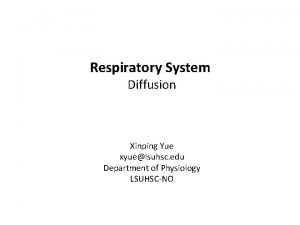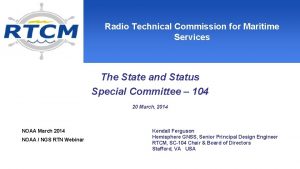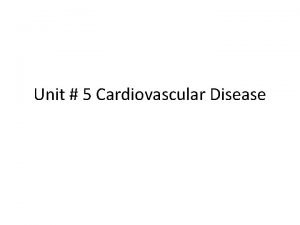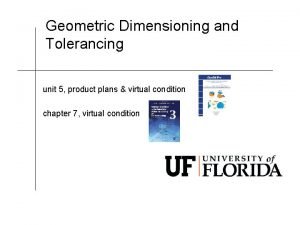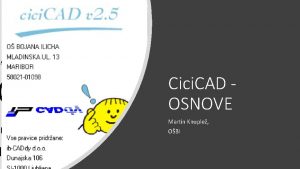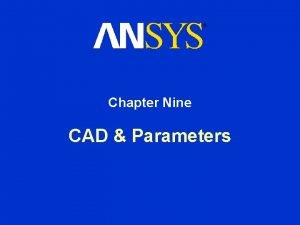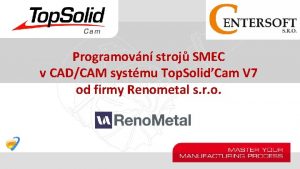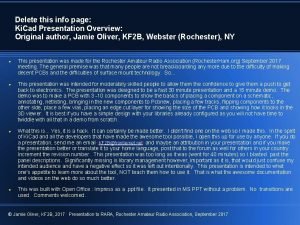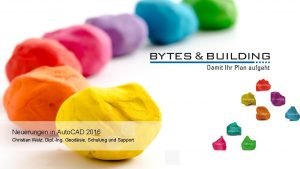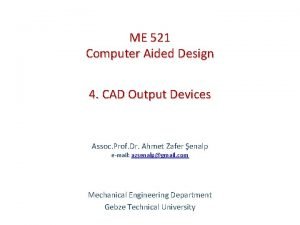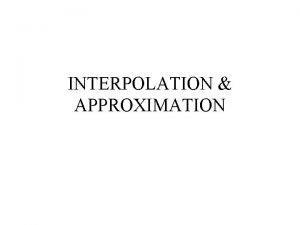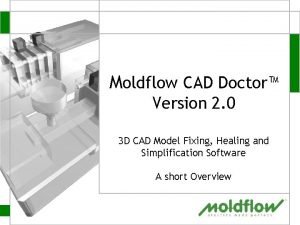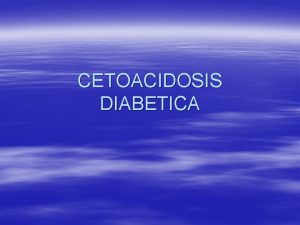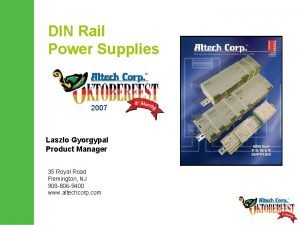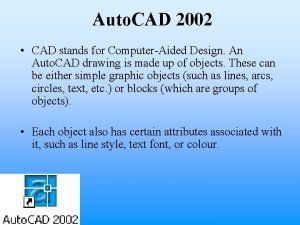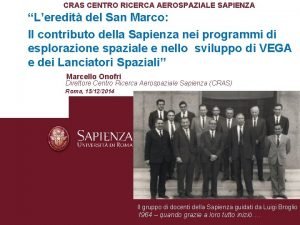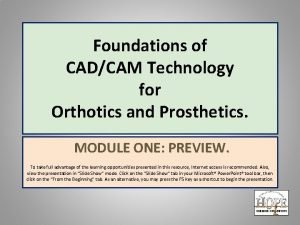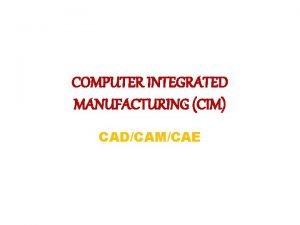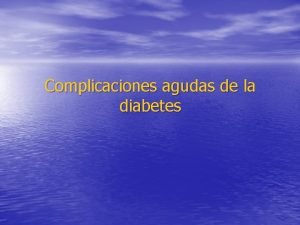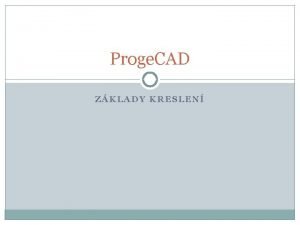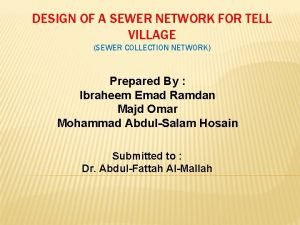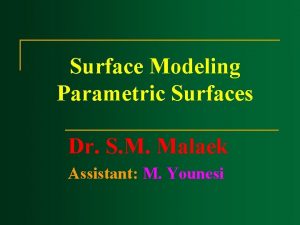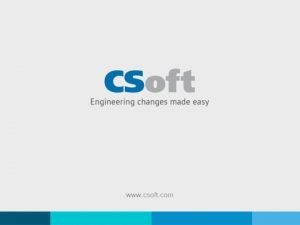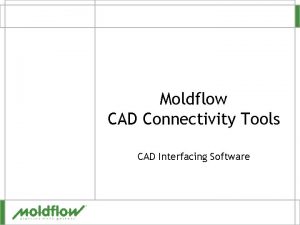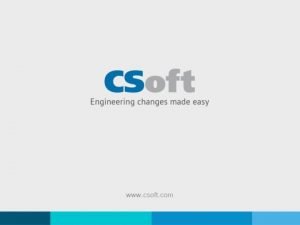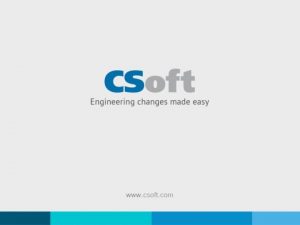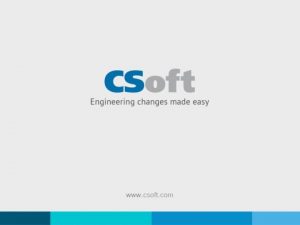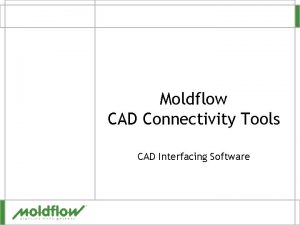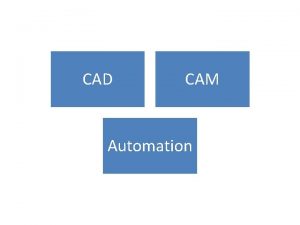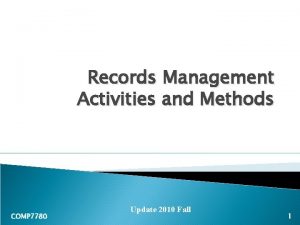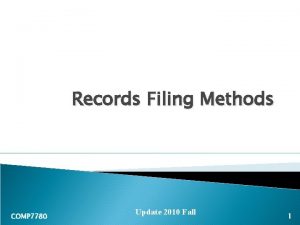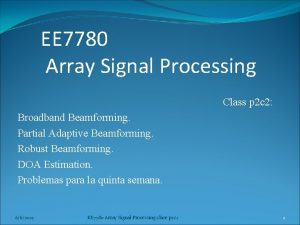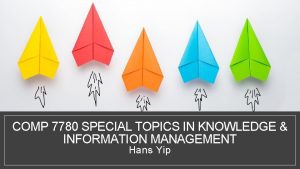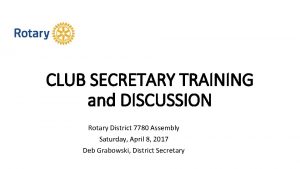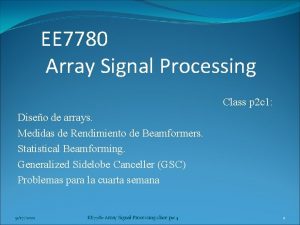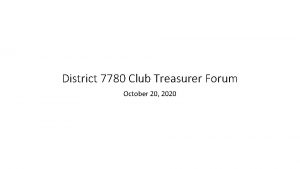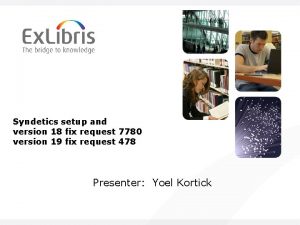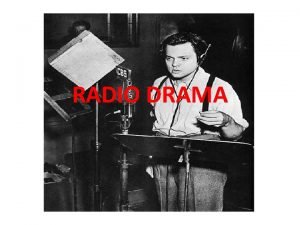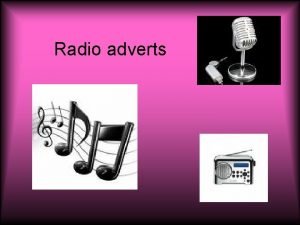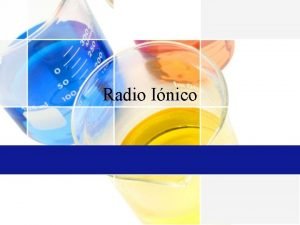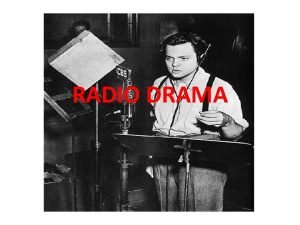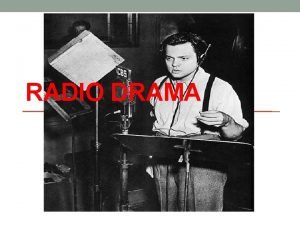Radio CAD Limited Technical 44 0 7780 667414































- Slides: 31

Radio. CAD Limited Technical +44 (0) 7780 667414 www. radiocad. com RFID Antenna Basics

Radio. CAD Limited Technical +44 (0) 7780 667414 www. radiocad. com Overview Near Field Communications (NFC) describes a set of technologies operating on 13. 56 MHz (HF). Older Prox technologies operating on 125 KHz may also need consideration. Bluetooth Low Energy (BLE) [now marketed as Bluetooth Smart] is a low-power version of the Bluetooth standard aimed at RFID applications and operating in the 2. 4 GHz ISM band. This presentation gives a step by step method for designing reader antennas for these technologies.

Radio. CAD Limited Technical +44 (0) 7780 667414 www. radiocad. com Step 1: Locating the antenna(s) NFC Considerations i) Eddy Current losses: avoid metal plates, PCB ground-planes ii) Mutual coupling: avoid metal loops and tuned coils The problem is that Eddy Currents circulate in a material that has resistance. This causes energy loss due to heating and consequent de -tuning, de-Q’ing, and reduction in available field strength.

Radio. CAD Limited Technical +44 (0) 7780 667414 www. radiocad. com Step 1: Locating the antenna(s) BLE Considerations i) Path attenuation: stay outside metal shields, poor body penetration (wet tissues). ii) Proximity detuning: antenna position is important iii) Directionality: hard to keep an omnidirectional pattern at 2. 4 GHz.

Radio. CAD Limited Technical +44 (0) 7780 667414 www. radiocad. com Step 2: Play with some off-the-shelf antennas Use a network analyser with an off-the-shelf tuned-up antenna and see what happens when you move it into the preferred location. Can also investigate the effect of moving metal objects near the antenna. A cheap radio-ham analyser will do ! This handheld vector network analyzer costs € 200 and operates on both 125 KHz and 13. 56 MHz bands

Radio. CAD Limited Technical +44 (0) 7780 667414 www. radiocad. com Return loss measurements Will quickly show close the tuning is to the desired frequency.

Radio. CAD Limited Technical +44 (0) 7780 667414 www. radiocad. com Step 3: Designing an HF antenna (13. 56 MHz) (this is step 1 if you don’t have anything to play with already) Reader Coil Size Bigger for cards, smaller for tags. N = number of turns 1 to 5 (less turns for bigger enclosed areas). Balanced or unbalanced HID readers support either 1 or 2 unbalanced antennas via 50 ohm connectors. Shielded or unshielded Shielding removes E-field interference is a problem where there are large voltage swings at frequencies with harmonics close to NFC carrier frequency, e. g. switched mode power supplies.

Radio. CAD Limited Technical +44 (0) 7780 667414 www. radiocad. com Fully shielded antenna example This small gap in the shield prevents the antenna from becoming shorted. The rest of the antenna coil is completely shielded.

Radio. CAD Limited Technical +44 (0) 7780 667414 www. radiocad. com Unshielded antenna example (top view) Keypad example: The red circles represent key positions on the top PCB layer. The ground-plane is cut away from the bottom half of the PCB to facilitate the HF reader antenna All reader electronics sit under the groundplane. Ground plane comes close to the reader coil but it doesn’t overlap. There are no tracks forming loops in this area other than the reader coil itself.

Radio. CAD Limited Technical +44 (0) 7780 667414 www. radiocad. com Unshielded antenna example (rear view) Test PCB: If you want to test the antenna performance before the reader electronics have been designed make a trial PCB with just the major elements (groundplane, key pad fingers) and a test connector with the trial antenna matching circuit. Add the footprint for a small U. FL connector to allow the reader antenna to be connected to test equipment. The antenna matching circuit goes here close to the antenna loop.

Radio. CAD Limited Technical +44 (0) 7780 667414 www. radiocad. com Unbalanced antenna matching circuit The matching circuit comprises a series capacitance (Cs) and a parallel capacitance (Cp). It’s normal to fit at least two footprints for each so that standard E 12 or E 24 series capacitor values can be used together to get the exact required value. Always choose 1% tolerance capacitors. A resistor (R) controls losses and hence the Q factor. Start with a value of just a few ohms. If there is a lot of metal around the antenna then eddy-current losses in the metal will control the Q factor and R can be set to 0 .

Radio. CAD Limited Technical +44 (0) 7780 667414 www. radiocad. com Tuning using a network analyser Fc and |Z| The centre frequency and the on-tune impedance are controlled by the two capacitors Q factor The Q-factor is controlled by the damping resistor and by the proximity of metal objects. One can use variable capacitors in early prototypes to allow for easy adjustment of the series and parallel capacitances. For production the capacitance values need to be measured and then fixed.

Radio. CAD Limited Technical +44 (0) 7780 667414 www. radiocad. com Step 4: Adding an LF Antenna (dual-band antennas add design challenges and compromises) There are far fewer design parameters for 125 KHz. Inductance is king, LF antennas are not usually shielded Inductance normal range is 0. 7 to 0. 8 m. H. Inductances down to 0. 55 m. H can be accommodated with the addition of a shunt capacitor. line Coil Calculations: (www. technick. net)

Radio. CAD Limited Technical +44 (0) 7780 667414 www. radiocad. com Dual-band antenna examples Basic topologies: 1 – Perpendicular 2 – Concentric 3 – Adjacent

Radio. CAD Limited Technical +44 (0) 7780 667414 www. radiocad. com Dual-band PCB antenna example (concentric)

Radio. CAD Limited Technical +44 (0) 7780 667414 www. radiocad. com Dual-band antenna example (perpendicular)

Radio. CAD Limited Technical +44 (0) 7780 667414 www. radiocad. com Dual-band antenna example (perpendicular)

Radio. CAD Limited Technical +44 (0) 7780 667414 www. radiocad. com Dual-band antenna example (adjacent) PROX read area All other cards read here Adjacent antennas usually have the best performance because the de-tuning effect of one antenna on the other is minimised. However many manufacturers don’t like the different read areas for Prox versus other technologies.

Radio. CAD Limited Technical +44 (0) 7780 667414 www. radiocad. com Effective read area for LF and HF Perpendicular example

Radio. CAD Limited Technical +44 (0) 7780 667414 www. radiocad. com Effective read area for LF and HF 125 KHz PROX

Radio. CAD Limited Technical +44 (0) 7780 667414 www. radiocad. com Effective read area for LF and HF 13. 56 MHz NOTE that the PROX reader antenna actually spread the HF read area beyond the HF antenna area in this example.

Radio. CAD Limited Technical +44 (0) 7780 667414 www. radiocad. com Effective read area for LF and HF Best read spot for all technologies

Radio. CAD Limited Technical +44 (0) 7780 667414 www. radiocad. com Step 5: Tuning & radiated measurements Key Measurements A/ Field Strength (you need to calibrate your probe for this), B/ Wave-shape (Q and overshoot). DSO = Digital Storage Oscilloscope

Radio. CAD Limited Technical +44 (0) 7780 667414 www. radiocad. com Field strength measurements: • Very useful for tuning (even if not calibrated) • Warning: tuning to peak amplitude is not always best for all technologies (e. g. MIFARE) • A calibrated antenna is needed to measure field strength (H). Keep 1. 5 < H < 14 A/m (14 A/m is an arbitrary limit to avoid damage to tags / cards) Radio. CAD have a calibrated test site at our Cowden facility for calibrating both 125 KHz and 13. 56 MHz antennas.

Radio. CAD Limited Technical +44 (0) 7780 667414 www. radiocad. com Wave-shape measurements: Q is most accurately measured in the time domain using a detector for DSO 1 synchronisation: Q = Fc DT Q = 13. 56 DT Where DT is measured in S Aim for Q 24 and Keep 18 < Q < 30 Sheet metal and metal objects easily cause Q < 18. Overshoot = 1 - B/A Aim for Q near 0% and Keep 0% < Oshoot < 10% 1 – Digital Storage Oscilloscope

Radio. CAD Limited Technical +44 (0) 7780 667414 www. radiocad. com Wave-shape measurements: Beware of over-damping: Over-damping occurs when the envelope rise time is greater than is needed to achieve 0% overshoot. The red trace is critically damped and the blue over-damped, both traces exhibit 0% over-shoot. To avoid over-damping Aim for OS > 0%. Often times overdamping adds a high Q-factor.

Radio. CAD Limited Technical +44 (0) 7780 667414 www. radiocad. com Step 6: Read Range Measurements (to confirm good tuning) A/ Read-range measurements should be made with the full range of tags and cards that might be used in practice. B/ When trimming the tuning components to obtain the best ranges / best range compromise it should not be necessary to make large tuning component value changes. C/ Use a non-metallic support for measuring the read-range.

Radio. CAD Limited Technical +44 (0) 7780 667414 www. radiocad. com Step 7: ISO 14443 B / Felica Residual Carrier: (residual carrier allows cards to receive power at all times): The modulation index (A-B)/(A+B) should be set to 11% ± 3%. It is set by writing a reader register. It should be set only as the last step in tuning an antenna because tuning affects the modulation index.

Radio. CAD Limited Technical +44 (0) 7780 667414 www. radiocad. com Step 8: combining BLE and NFC antennas: (example hybrid product): BLE operates in the 2. 4 GHz ISM band. Antennas for this technology work best on the edge of a ground plane. Since NFC antennas need to be kept away from ground planes, BLE and NFC antennas naturally become properly segregated. The large frequency gap between HF and BLE means that interference and coupling between technologies will be minimal and easy to mitigate.

Radio. CAD Limited Technical +44 (0) 7780 667414 www. radiocad. com Example BLE antennas: Inverted-F PCB traces Whip antenna Chip antenna (external plug in)

Radio. CAD Limited Technical +44 (0) 7780 667414 www. radiocad. com <end>
 Ficks law
Ficks law Swan environmental
Swan environmental Trunking vs conventional radio system
Trunking vs conventional radio system Radio technical commission for maritime services
Radio technical commission for maritime services Cad risk factor
Cad risk factor Tolerance cad
Tolerance cad Cad vocabulary
Cad vocabulary Autocad meaning
Autocad meaning Cad comorbidities
Cad comorbidities Hspice netlist
Hspice netlist Cici cad
Cici cad Cad parameters
Cad parameters Cad cam
Cad cam Ki cad
Ki cad Cad 2016
Cad 2016 Nano to cad
Nano to cad Output
Output Metylocyklopentan
Metylocyklopentan Interpolation and approximation of curves in cad
Interpolation and approximation of curves in cad Cad
Cad Cad leve moderada severa
Cad leve moderada severa Sola power supply cad drawings
Sola power supply cad drawings Cad 2002
Cad 2002 Cad ingegneria aerospaziale sapienza
Cad ingegneria aerospaziale sapienza Cad cam insoles
Cad cam insoles Objectives of cim
Objectives of cim Triada hipoglucemia
Triada hipoglucemia Proge cad
Proge cad Sewer cad training
Sewer cad training Cad theory in consumer behaviour
Cad theory in consumer behaviour Grayson county texas appraisal district
Grayson county texas appraisal district Surface modelling in cad
Surface modelling in cad
